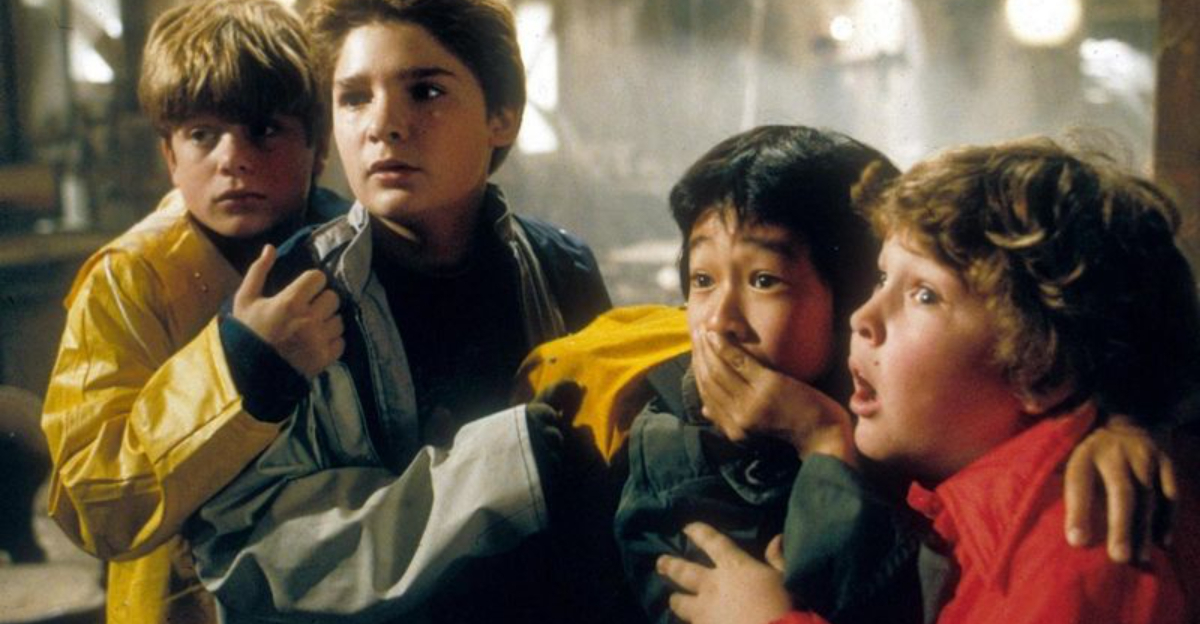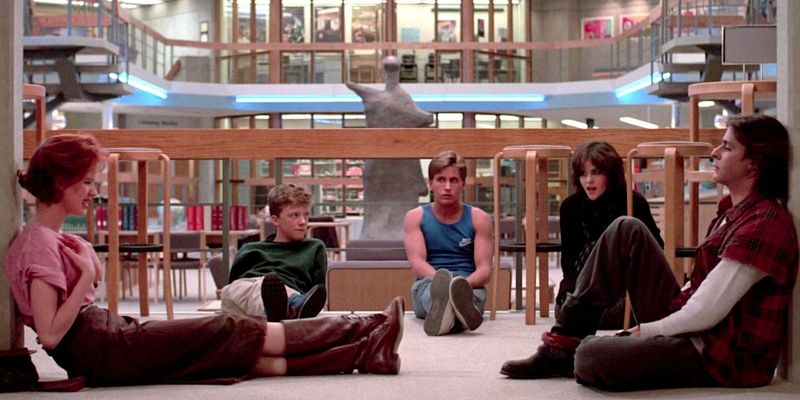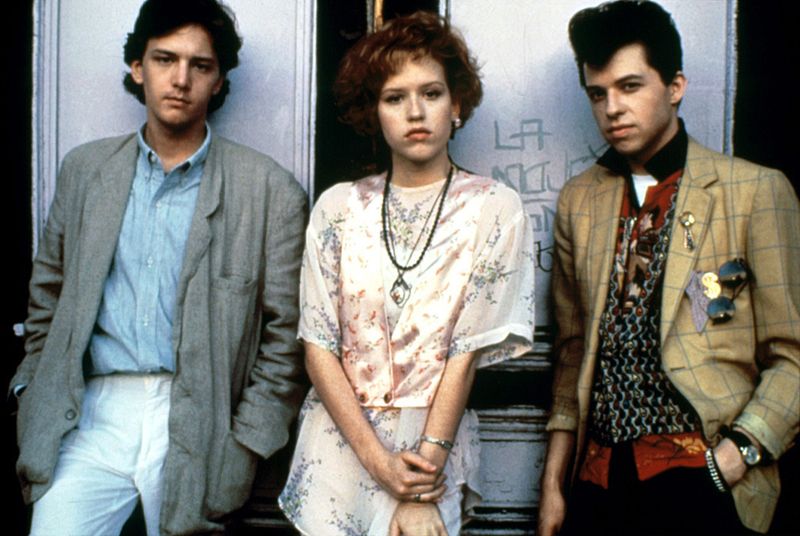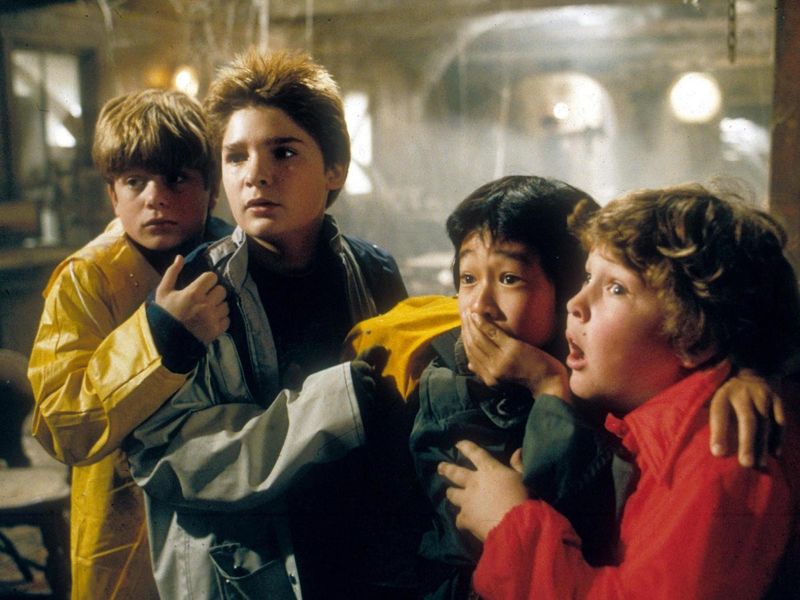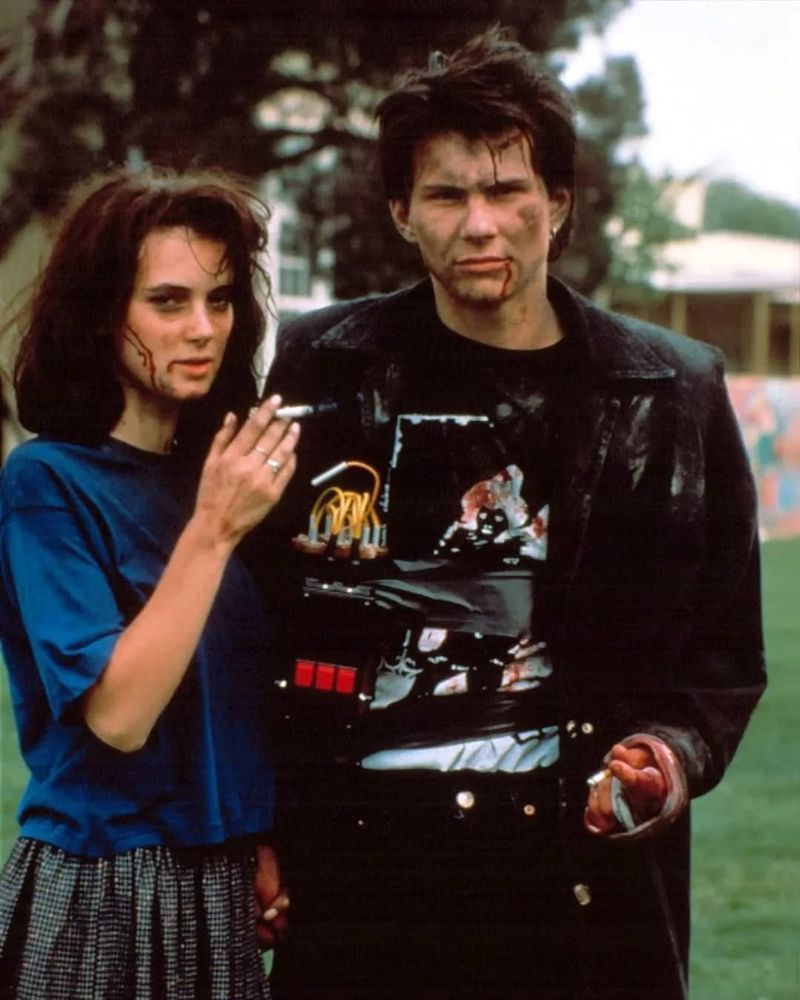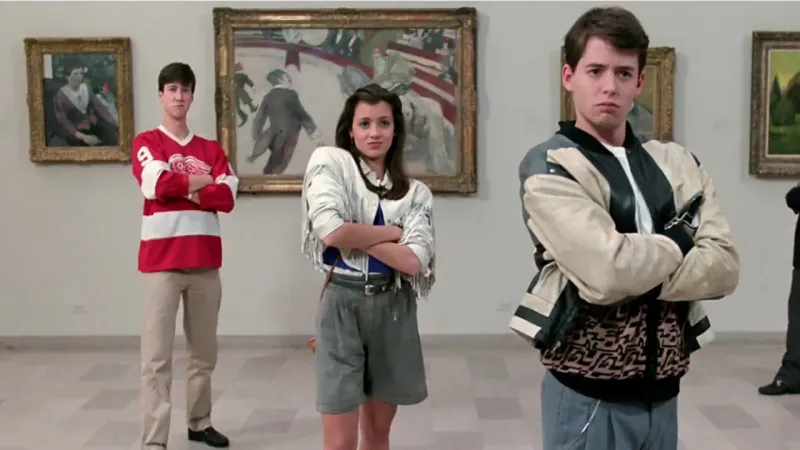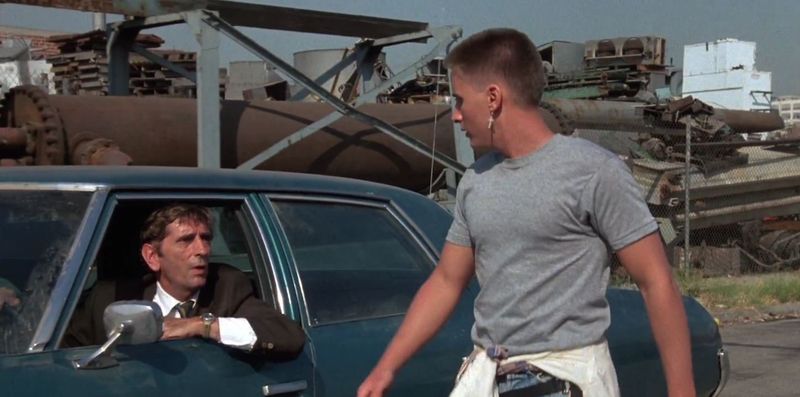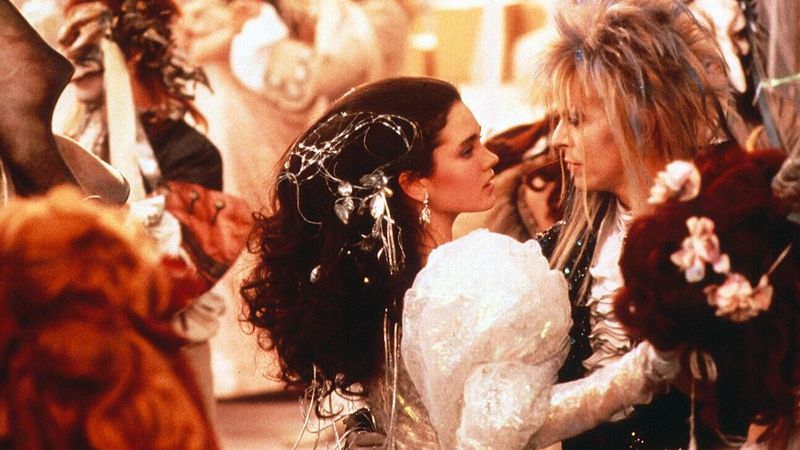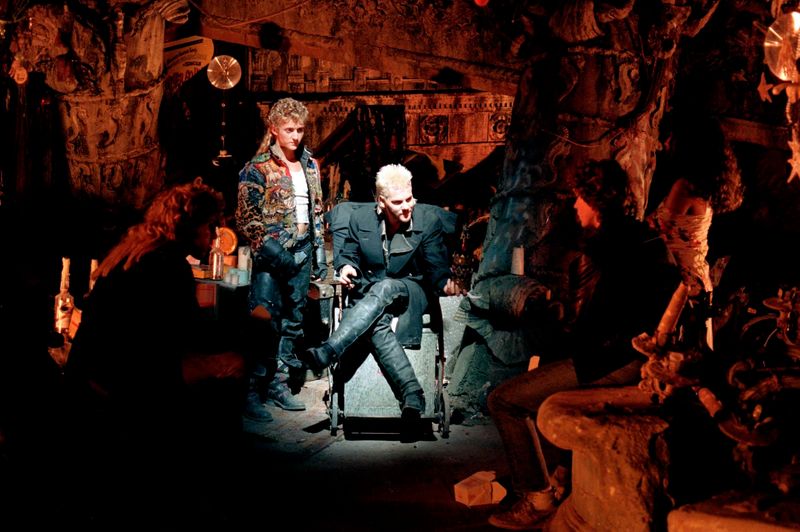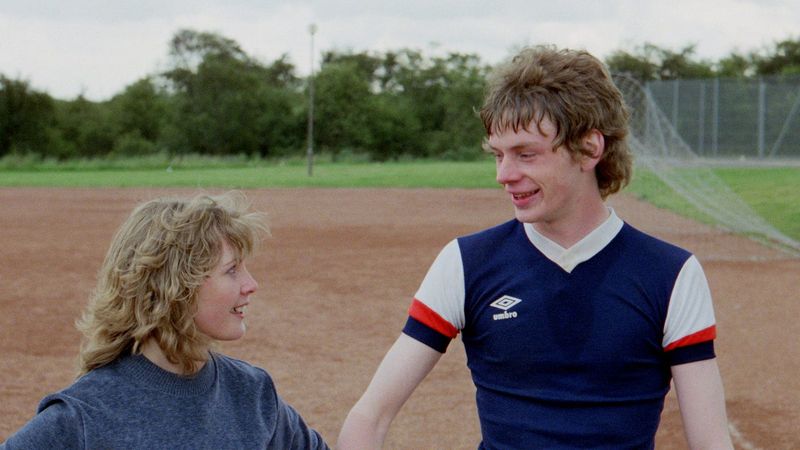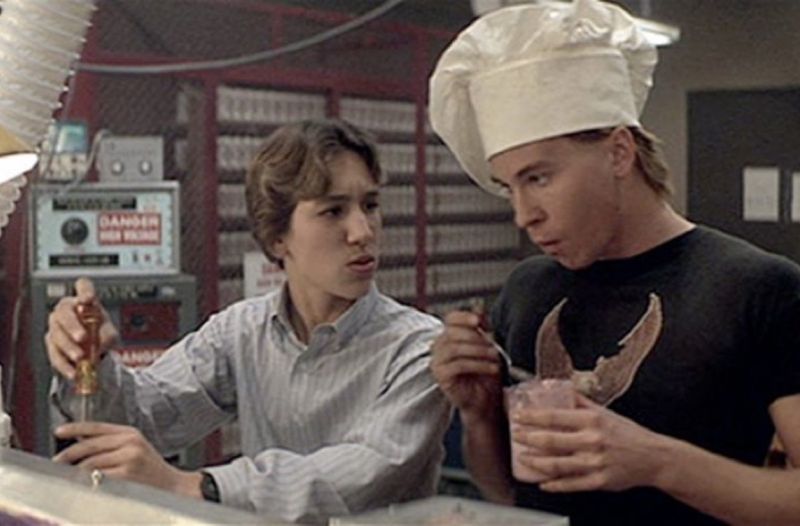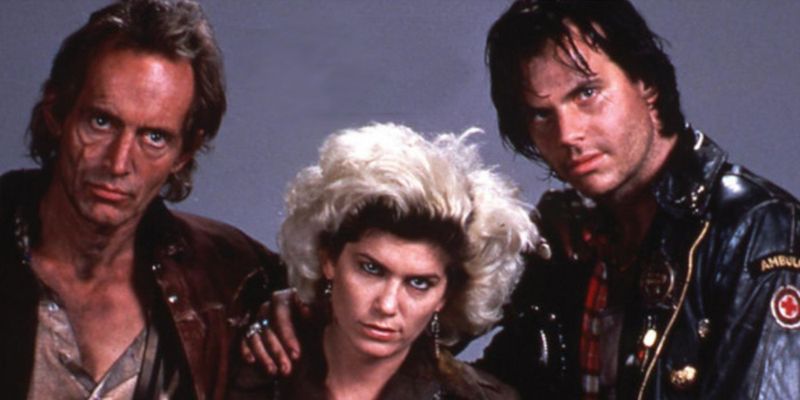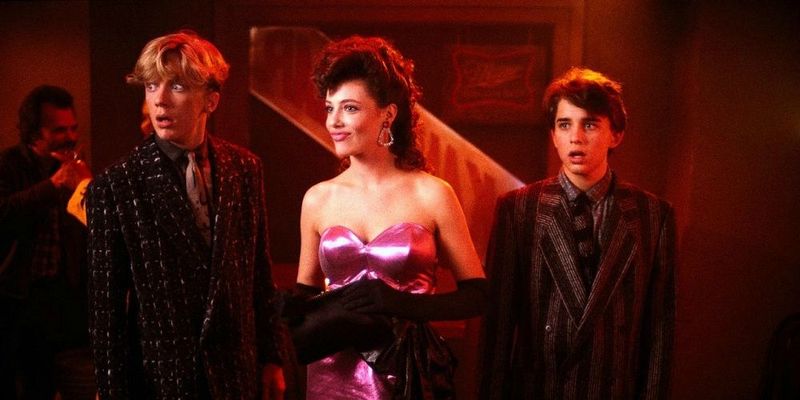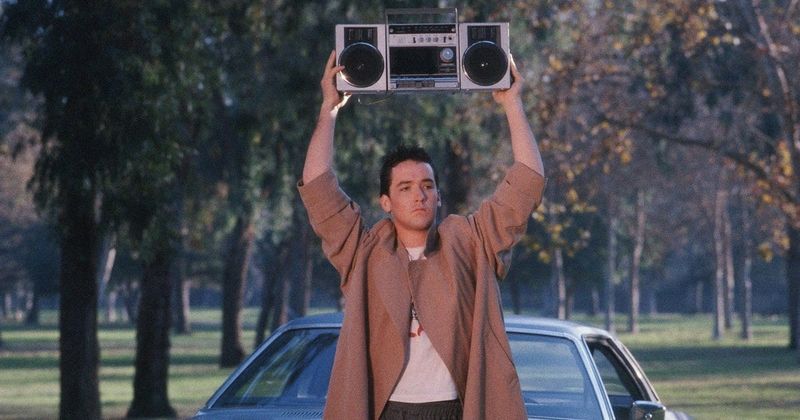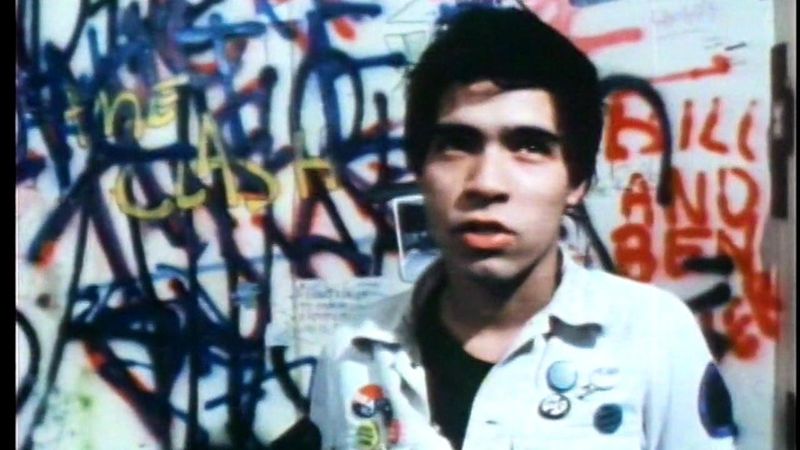The 1980s revolutionized how we viewed social outcasts on screen. Suddenly, the weird kids, the rebels, and the square pegs weren’t just supporting characters – they were the heroes of their own stories. These films celebrated individuality in all its awkward glory, turning teenage angst into art and social rejection into a badge of honor. Grab your mixtape and journey back to when being different wasn’t just okay – it was absolutely radical.
1. The Breakfast Club (1985): Detention Rebellion
Five teenagers from different social circles discover they’re not so different after all during Saturday detention. The brain, athlete, princess, criminal, and basket case strip away stereotypes, sharing vulnerabilities that make them human.
John Hughes captured lightning in a bottle with this film. Their iconic fist-pump finale cemented the message that being an outcast wasn’t something to hide – it was something everyone experienced in their own way.
2. Pretty in Pink (1986): Fashion Revolutionary
Working-class Andie Walsh navigates high school’s brutal social landscape while falling for rich boy Blane. Her thrift-store style becomes her superpower – a visual rebellion against wealth-based conformity.
Molly Ringwald’s performance turned teenage insecurity into strength. When she crafts her own prom dress from scratch, it’s more than fashion – it’s a declaration that creativity trumps cash. Her pink DIY creation became an anthem for outsiders everywhere.
3. The Goonies (1985): Misfits on a Mission
A band of neighborhood kids – the asthmatic leader, the inventor, the chatterbox, and the klutz – hunt for pirate treasure to save their homes from demolition. Their differences become strengths during their underground adventure.
Director Richard Donner created magic by letting kids be authentically weird. The film celebrates friendship among those rejected by the cool crowd. Watching these underdogs triumph made every awkward kid believe they could be part of something extraordinary.
4. Heathers (1988): Deadly Cool
Veronica Sawyer infiltrates the popular clique only to discover its toxic core. When her new boyfriend starts eliminating the social elite, she’s caught in a darkly hilarious moral crisis.
This pitch-black comedy turned high school politics into literal warfare. Winona Ryder’s character rejects both conformity and revenge, finding her own path. The film’s razor-sharp dialogue gave outsiders a vocabulary for their frustration, making cynicism seem intellectually superior to mindless popularity.
5. Ferris Bueller’s Day Off (1986): Charismatic Rebel
Matthew Broderick’s Ferris breaks the fourth wall while breaking every school rule. His elaborate scheme to skip class becomes a masterclass in living life fully – museums, parades, fancy restaurants included.
What makes Ferris revolutionary isn’t just his rebellious spirit but his absolute confidence. He rejects the system without becoming bitter. Instead of being punished for non-conformity, he’s rewarded with admiration from nearly everyone except the principal obsessed with catching him.
6. Repo Man (1984): Punk Rock Aliens
Otto, a disaffected punk, joins the strange world of repo men only to get tangled in a conspiracy involving aliens and a mysterious Chevy Malibu. Director Alex Cox blends science fiction with counterculture attitude.
The film’s gritty Los Angeles setting feels apocalyptic yet oddly inviting. Generic food products labeled simply “FOOD” and “BEER” mock consumerism. For viewers tired of Hollywood polish, this cult classic proved weird could be profound – making outsider status feel like membership in a secret, superior society.
7. Labyrinth (1986): Fantastical Outsider
Teenage Sarah journeys through a magical maze to rescue her baby brother from David Bowie’s Goblin King. Her allies? A dwarf, a gentle monster, and a knight who rides a sheepdog.
Jim Henson’s puppetry created a world where oddities are celebrated. Sarah’s bedroom reveals her misfit status – fantasy books, costumes, and toys showing her retreat from ordinary teen concerns. The film validates imagination as power, suggesting dreamers and weirdos might actually see truths others miss.
8. The Lost Boys (1987): Vampire Outsiders
Santa Carla’s motorcycle-riding vampires turn rebellion deadly in this horror-comedy hybrid. Their underground lair, decorated with stolen hotel furnishings and rock posters, represents the ultimate teenage hideout.
Kiefer Sutherland’s platinum-blonde vampire David offers eternal youth and freedom from rules. The film cleverly parallels vampire transformation with teenage rebellion. Being undead becomes a metaphor for rejecting society’s expectations – an extreme version of dyeing your hair or getting a forbidden piercing.
9. Gregory’s Girl (1980): Awkward Charm
Scottish teenager Gregory falls for Dorothy, the girl who replaces him on the soccer team. His clumsy pursuit involves terrible dancing, worse dating advice, and endearing sincerity.
This low-budget gem celebrates ordinary kids without Hollywood gloss. Gregory’s gangly physicality and social missteps feel painfully authentic. Director Bill Forsyth found beauty in suburban Scotland’s mundane settings, suggesting romance doesn’t require glamour – just genuine heart and the courage to look foolish while following it.
10. Suburbia (1983): Punk Family
Runaway teens form a makeshift family in an abandoned suburban tract house they call “T.R.” (The Rejected). Their mohawks, safety-pin jewelry, and spray-painted walls create a visual middle finger to middle-class values.
Director Penelope Spheeris cast real street kids alongside actors for authenticity. The film doesn’t romanticize their harsh reality – showing hunger, violence, and prejudice they face. Yet their fierce loyalty to each other offers something beautiful: when biological families fail, rejected kids create their own tribes.
11. Real Genius (1985): Brilliant Troublemakers
Pacific Tech’s physics geniuses use their brainpower for elaborate pranks and justice. Val Kilmer’s Chris Knight rejects the notion that intelligence requires seriousness – his dorm room features an indoor slide!
The film flips the script on nerd stereotypes. These science students throw legendary parties and outsmart authority figures. Their final revenge – turning a military laser project into a massive popcorn maker that destroys a villain’s house – proves intelligence plus rebellion equals sweet, buttery justice.
12. Near Dark (1987): Outlaw Vampires
A farming family’s son falls for a mysterious girl who introduces him to her nomadic vampire clan. Their decrepit RV and nighttime road trips represent the ultimate rejection of settled society.
Director Kathryn Bigelow reimagined vampires as modern-day outlaws roaming America’s backroads. These bloodsuckers don’t have castles or capes – they have dive bars and stolen vehicles. The film’s gritty Western aesthetic made supernatural monsters feel strangely relatable to anyone who’s ever dreamed of escaping their hometown.
13. Weird Science (1985): Nerd Revolution
Two techno-geeks create the perfect woman using their computer, only to discover she has powers beyond their imagination. Lisa doesn’t just give them confidence – she transforms their understanding of themselves.
John Hughes tapped into teenage male fantasy while subverting it. The boys initially want arm candy but find a mentor instead. Their journey from social zeros to heroes involves mutant bikers, a missile through their house, and learning that true confidence comes from within – not from female validation.
14. Say Anything… (1989): Authentic Romantic
Lloyd Dobler isn’t rich, academically gifted, or traditionally ambitious – just deeply authentic. His pursuit of valedictorian Diane Court involves that iconic boombox serenade and unwavering self-belief.
John Cusack’s portrayal created the template for the sensitive outsider hero. Lloyd’s kickboxing hobby and refusal to “buy, sell or process” anything as a career path mark him as society’s oddball. Yet his emotional honesty makes conventionally successful characters seem hollow by comparison.
15. The Decline of Western Civilization (1981): Documentary Defiance
Penelope Spheeris’ raw documentary captured L.A.’s explosive punk scene. Bands like Black Flag, X, and the Germs perform with chaotic energy while fans slam dance in grimy clubs.
The film doesn’t just observe the scene – it validates it as legitimate cultural expression. Interviews reveal thoughtful philosophy behind the apparent chaos. For kids in suburban bedrooms who felt suffocated by Reagan-era conformity, these sweaty, self-destructive performances represented forbidden freedom – proof that rejection by mainstream society could be a badge of honor.
